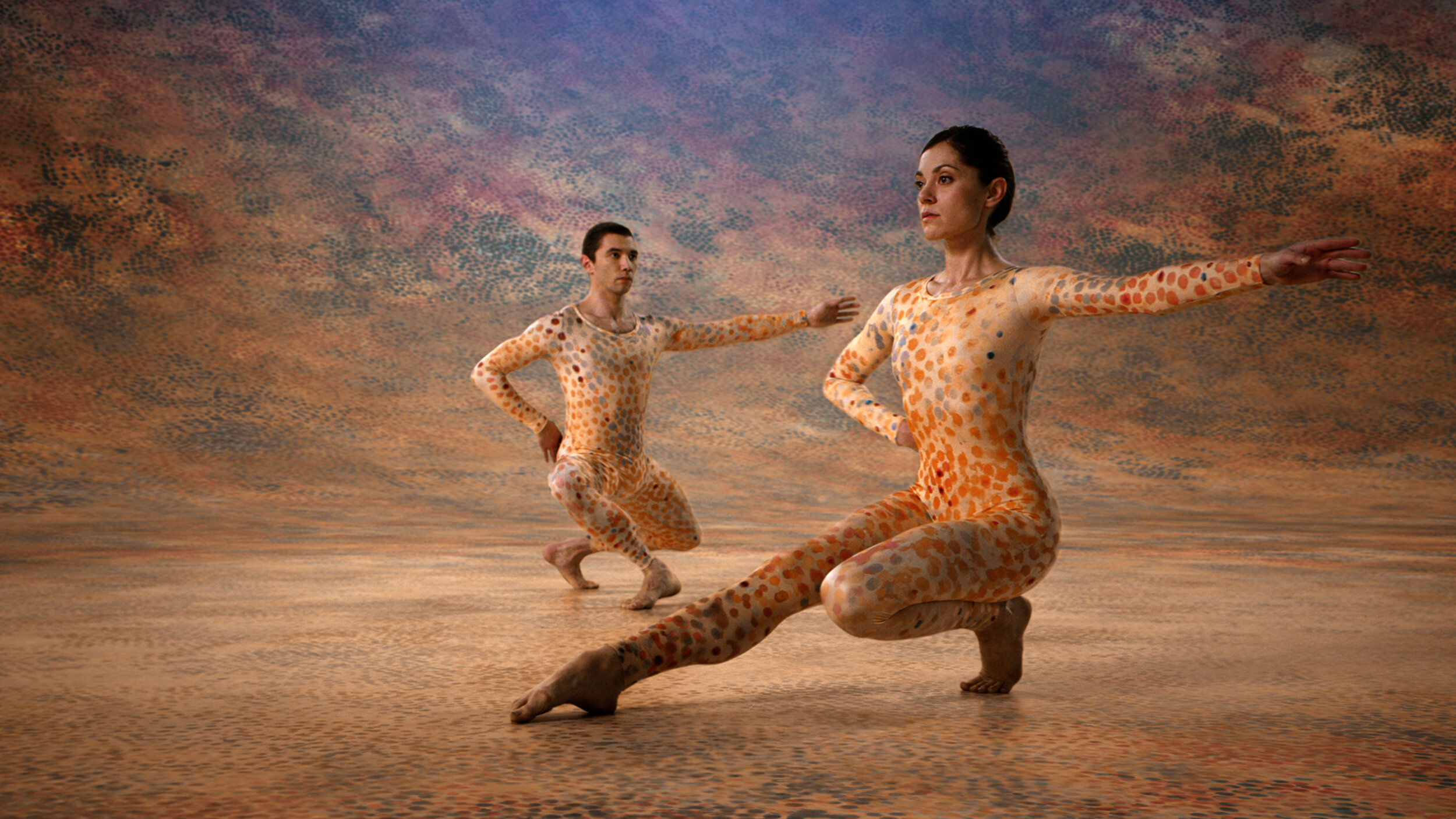Cunningham: A literally moving, 3-D intro to a dance legend you may not know but should
By Liam Lacey
Rating: A
I’m not sure why the dance documentary, Cunningham, bears the name it does. The surname is not so iconic that it couldn’t be confused with, say, the late fashion photographer Bill Cunningham, or dozens of historical military, sports, political musical or literary figures.
But take the first name, Merce, short for Mercier Philip "Merce" Cunningham, one of the most famous choreographers in modern dance, and you leave no doubt.
A scene from Merce Cunningham’s Summerspace, designed by Robert Rauschenberg.
Last year was filled with celebrations and performances marking the 100th anniversary of the choreographer, who died in 2009 at the age of 90, after being at the forefront of American dance for half a century. Known as the life partner of John Cage, and a collaborator with everyone from Jasper Johns to Radiohead, Cunningham remains one of those crossword puzzle names who, to quote the They Might Be Giants’ song, is, “one of those cultural figures that we don’t know much about.”
To be fair, by “we”, I mean people like me, for whom the film, Cunningham, from Moscow-born filmmaker Alla Kovgan, is perfectly suited.
The reason is, the film (shot in 3-D for those lucky enough to see it theatrically) is all about the dance, the living sculptural possibilities of the human body in myriad ways that are both witty and poetic. There is a trove of archival footage, audio interviews from dancers and other collaborators and read-aloud letters and writings. Most rewardingingly, Kovgan - in collaboration with some of Cunningham’s former dancers, Robert Swinston and Jennifer Goggans - has staged several of his best-known pieces, focusing on the first thirty years (1942-1972) of his career.
The works (14 of them are excerpted here) take place on rooftops, in tunnels, in city squares and on stages. Particularly memorable are “Summerspace” (1958) featuring a pointillist background from Robert Rauschenberg (the dancer’s unitards wear the same dots) and RainForest (1968), in which the dancers, in nude-coloured torn unitards, move between Andy Warhol’s floating silver pillows, like angels amidst Mylar clouds.
Through the voice-over and read passages, we almost subliminally absorb a history of the Seattle-born Cunningham, his period with the Martha Graham troupe, and the beginnings of his relationship with Cage, who inspired Cunningham to his “chance” method of organizing dance works. There are stories of Cunningham’s troupe travelling by van, like a rock band, out of New York to various small towns, bewildering audiences as they pursued their own vision. The real breakthrough came in 1964 when the Merce Cunningham Troupe became a hit in London, England.
While today, it seems obvious that dance is not necessarily “interpretive”, we hear Cunningham repeatedly explaining to interviewers that what he is creating is a self-contained presentation, not a story or a representation of something else. “I never was interested in dancing that referred to a mood or a feeling, or in a sense expressed the music ... the dancing does not refer, it is what it is. It’s that whole visual experience.”
The emphasis on creating a visual experience is the key to Kovan’s approach to her film. There have been a rash of documentaries of writers and musicians, aimed at the streaming-video market, that conscript a row of seated witnesses to tell us how wonderful a famous artist is. They betray living artists by turning them into dull monuments.
Cunningham is quite different: The film is kinetic and elliptical, with clips from different eras juxtaposed in panels, moving back to a single frame of dancers’ feet, or artfully posed in instants of euphoria. This is a film that makes you want to absorb the language of dance or, at least, immerse yourself in more Merce, which makes this an exemplary introduction to a major twentieth century artist.
Cunningham. Directed and written by Alla Kovan. Starring John Cage, Robert Swinston and Jennifer Goggans. Opens Friday, January 10 at the TIFF Bell Lightbox in Toronto, and January 17 in Vancouver and Montreal.

